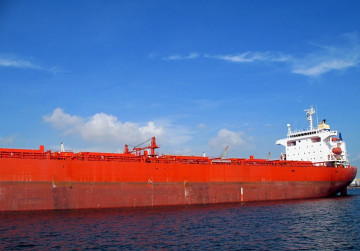As of now, there are 50,000-some vessels on Earth which together comprise the international shipping industry. It’s a staggering number of freighters and tankers by anyone’s count. Likewise, these ships constitute 90% of the total international trade on Earth, far outnumbering overland and airborne trade-routes in sheer bulk tonnage and volume. Obviously, these ships come in many different sizes and tonnage capacities, the largest being the so-called “supertankers” that ply the oceans –the largest of them weighing, at full load capacity, a staggering 564,763 tons. As has been mentioned in other blog entries on our site, while supertankers form a small minority of total sea traffic, they carry an outsized amount of the world’s total seaborne goods, particularly when it comes to commodities like crude oil. While these ships carry a disproportionate total of the goods and services, there are many ports throughout the world that do not have the capacity to harbor these giant ships. Indeed, up until recently, even the Panama Canal has not been able to carry supertankers through its waters.

All that is changing rapidly with the exponential increase of globalization and international trade. Supertankers are wallowing behemoths, sure, but they are the practical reality of the day, and the world’s 20th century port infrastructure needs desperately to catch up with that reality. All along the Eastern Seaboard, American cities are dredging their harbors and increasing the length of their berths and piers in order to allow supertankers to safely navigate. New York, Newark, Baltimore, Savannah, Miami, and New Orleans all are getting in on the act of building giant steel-based facilities that each city hopes will attract more supertanker traffic to its port.
We are Florida-based but have many years of experience serving ports and port projects all over the US and the world. Continental Steel and Tube salutes and welcomes the ambitions of America’s cities to better integrate into the global trade framework. We carry all of the essential metal components and compositions needed to help retrofit America’s ports: things likecorrosion-resistant stainless steel beams, plating, tubing, and pipe, as well as Grades 1 and 2 Titanium bars, flanges, forgings, sheet, pipe, plate, and welding wires. We are happy and honored to support the construction of America’s new port facilities. Contact us today to see what we can do for your city, state, or company.
